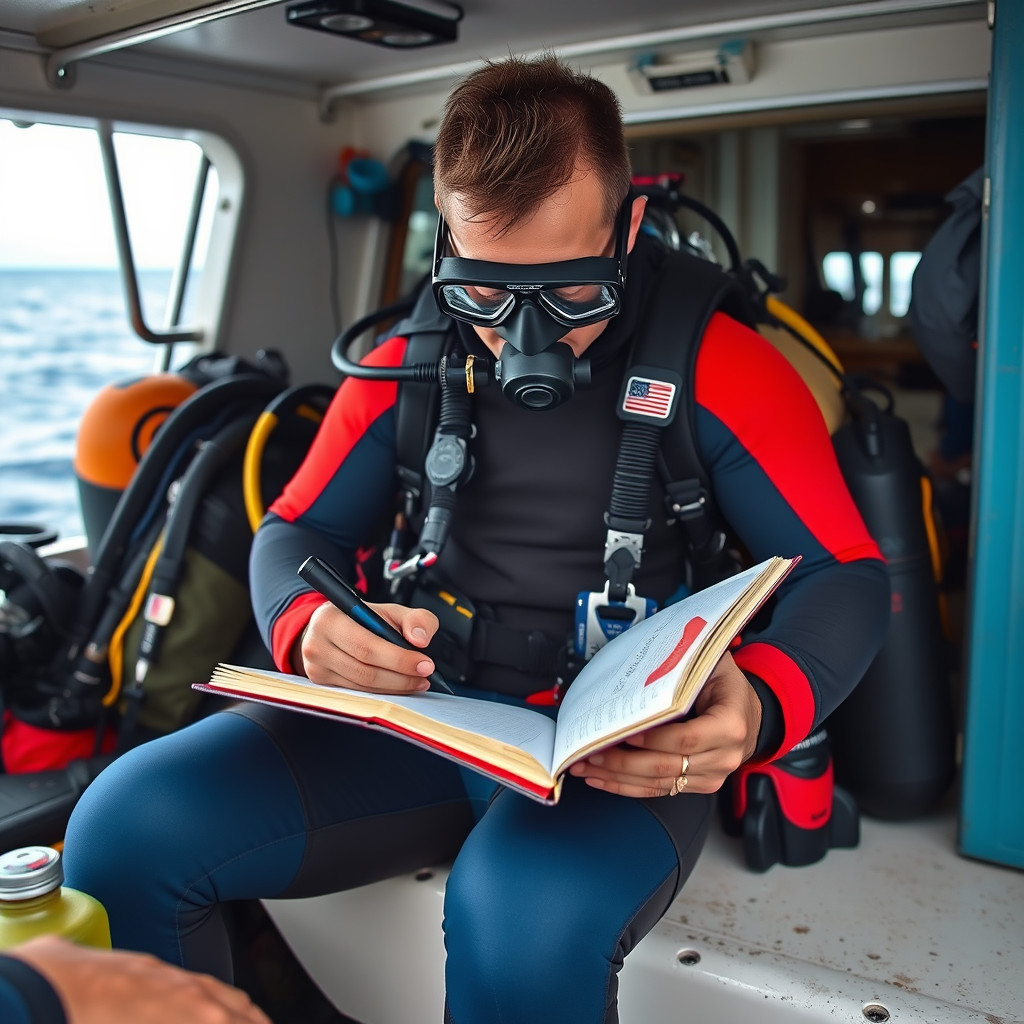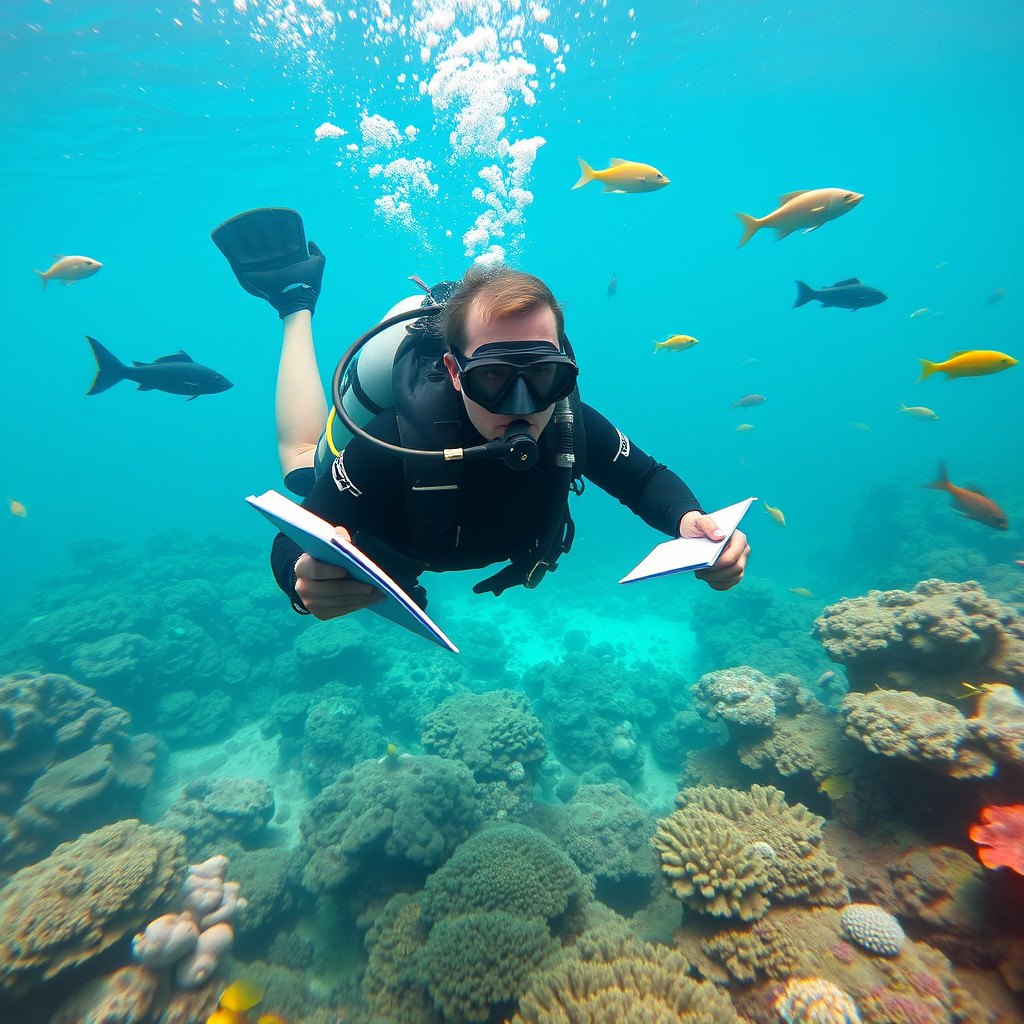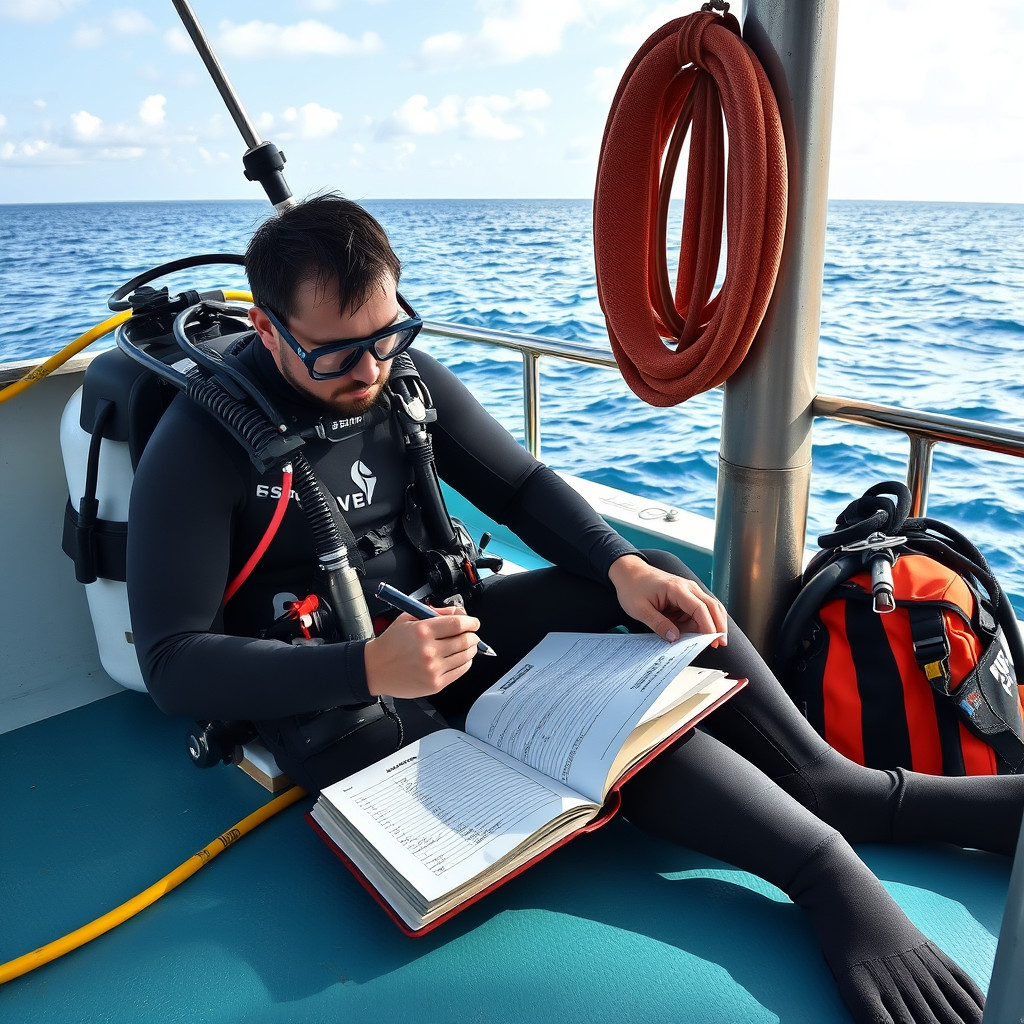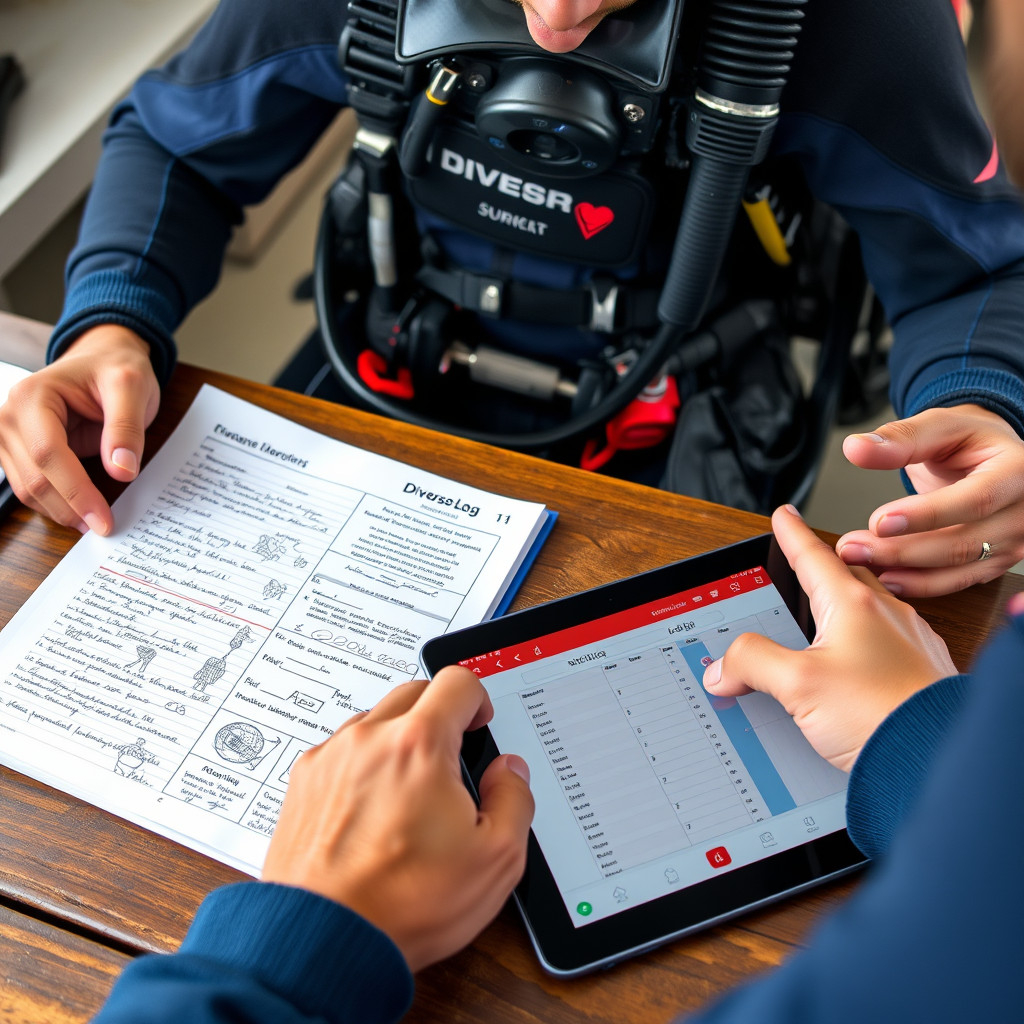Dive Logs: Keeping Memories from Underwater Adventures
Find out how to keep a dive log and track your underwater experiences effectively.
Diving into the ocean opens up a world of wonders. From colorful coral reefs full of life to the peaceful depths below, every dive brings something new. But how do you remember all these amazing experiences? That's where a dive log comes in!
What Is a Dive Log?
A dive log is your personal scuba diary. It's where you record important details of each dive. This includes when and where you dived, what you saw, the conditions, and any special moments. It's a way to remember each underwater journey and see how you've grown as a diver.
Why Keep a Dive Log?

Keeping a dive log is more than recalling good times—it's also a tool to improve your diving skills. Here's why you might want to keep one:
See Your Progress: By noting dive details, you can track improvements. You might notice changes in your air use or how comfortable you feel at different depths.
Gear Notes: Recording what equipment you used, like weights or wetsuit type, helps you make better choices later.
Dive Site Info: Writing down conditions, like temperature and visibility, is useful if you return or visit similar sites.
Certification Proof: Some advanced courses need you to prove a certain number of dives. Your dive log serves as proof.
Share Experiences: Sharing your dive stories with friends and fellow divers is fun. A dive log helps you remember the details.
How to Start Logging Your Dives

Starting a dive log is easy, and you can include as much or as little as you like. Many divers include:
Date and Time: When you dived.
Dive Number: Keeping a count of your dives.
Location and Site: Where you dived.
Depth and Time Underwater: How deep and how long.
Water Conditions: Notes on temperature, visibility, currents, and weather.
Gear Used: Details about your equipment setup.
Dive Buddy: Who you dived with.
Type of Dive: Was it a reef dive, wreck dive, or night dive?
Marine Life Seen: Interesting creatures you saw.
Personal Notes: Anything special, like how you felt or something unusual.
By including these details, you'll have a thorough record of your dives.
Dive Logging Options: Paper or Digital?
When keeping a dive log, you can choose between a paper logbook and digital options. Both have their pros.
Paper Logbooks
Writing in a physical logbook has its own charm. Many divers enjoy jotting down notes by hand, adding sketches or stickers. A paper logbook can become a treasured keepsake.
Benefits:
You can hold it and flip through pages.
Easy to personalize with drawings or mementos.
No need for devices or batteries.
Things to Consider:
Can be damaged by water or lost.
Harder to search for specific info.
Doesn't automatically back up.
Digital Dive Logs
In today's tech world, digital dive logs are popular. There are apps and websites just for divers to log their dives.
Benefits:
Convenient—you can log dives on your phone, tablet, or computer.
Many apps sync with dive computers to import data.
Easy to search and sort your dives.
Often include stats and graphs to analyze your diving.
You can back up your data and access it anywhere.
Things to Consider:
Requires a device and sometimes internet.
Might need to learn new software.
Compatibility issues with some dive computers.
Some divers use both—a paper log for sentimental value and a digital log for convenience and backup.
Making the Most of Your Dive Log

To get the best out of your dive log, here are some tips:
Log Right Away: Write down details soon after diving so everything is fresh.
Be Detailed: The more info you include, the more useful your log will be.
Add Visuals: In a paper log, draw sketches or add stickers. In digital logs, attach photos or videos.
Reflect on Your Dives: Write about how you felt. Were you nervous or excited? Did you learn something new?
Review Often: Look back at past entries to spot patterns or areas to improve.
Protect Your Log: Keep a paper logbook safe and dry. For digital logs, back up your data.
Dive Logs and Skill Improvement
Your dive log isn't just a record—it's a learning tool. By reviewing your logs, you can:
Monitor Air Use: See how your breathing improves over time.
Note Comfort Levels: Track how you feel at different depths or conditions.
Optimize Equipment: Record how gear setups worked to plan better.
Gain Experience: Keep track of dives in different environments to become a versatile diver.
Sharing Dive Logs with Others

Sharing your dive experiences can be rewarding. Here's how:
Dive Clubs and Groups: Share logs and stories with fellow members.
Online Platforms: Digital logs may let you share dives online.
Social Media: Posting about your dives can inspire others and connect you with divers.
Remember to respect any rules about sharing dive site locations, especially if they're sensitive areas.
Dive Log Examples
Looking at examples can help set up your own log. Here are sample entries:
Paper Logbook Entry
Date: June 15, 2023
Dive #: 45
Location: Great Barrier Reef, Australia
Dive Site: Coral Gardens
Depth: Max 18 meters, Avg 12 meters
Bottom Time: 50 minutes
Visibility: 20 meters
Water Temp: 27°C
Gear: 3mm wetsuit, 6 kg weight
Buddy: Maria
Marine Life: Saw a sea turtle, schools of colorful fish, and a reef shark!
Notes: First time seeing a shark in the wild—exciting but a bit scary. The coral was stunning.
Digital Dive Log Entry
[Digital entries might include similar details, plus graphs or data from a dive computer.]
Date: August 10, 2023
Dive #: 78
Location: Monterey Bay, California
Dive Site: Kelp Forest
Depth Profile: Graph showing depth over time
Bottom Time: 42 minutes
Water Temp: 13°C
Visibility: 8 meters
Air Consumption: Start 200 bar, end 50 bar
Gear: 7mm wetsuit, hood, gloves, 10 kg weight
Buddy: Alex
Marine Life: Sea otters, jellyfish, various fish
Photos Attached: Uploaded pictures of sea otters and the kelp forest
Personal Notes: Cold water but an incredible experience swimming through the kelp. Need to work on air use in cold conditions.
Getting Started with Your Dive Log

If you're new to diving or logging dives, here's how to begin:
Choose Your Logbook: Decide on a paper log, digital log, or both.
Gather Supplies: For a paper log, get a waterproof notebook or a dive logbook. For digital logs, download an app or sign up on a website.
Set a Template: Use a consistent format for your entries.
Start Logging: After your next dive, fill in the details while fresh.
Stay Consistent: Make logging a habit. The more you log, the more valuable it becomes.
Dive Log Apps and Software
If you're interested in digital logs, here are some popular options:
Divers' Diary: Works with many dive computers, allows detailed logs.
Subsurface: Free software with lots of features.
Shearwater Cloud: Great for Shearwater dive computers.
PADI App: Offers dive logging and learning materials.
When choosing an app, consider compatibility, ease of use, and features you need.
Keeping Your Dive Log Secure
For paper logs:
Protect from Water: Use waterproof pages or a waterproof case.
Store Safely: Keep it in a safe place when not diving.
For digital logs:
Back Up Regularly: Ensure your data is backed up.
Use Passwords: Protect any accounts with strong passwords.
Check Privacy Settings: Be careful about sharing personal info.
Dive Logs and the Diving Community
Your dive log can help you connect with others. Sharing your experiences can lead to:
Learning Opportunities: Others might offer insights or advice.
Friendships: Bond over shared experiences and plan dives together.
Environmental Awareness: Documenting changes in dive sites can aid conservation.
The Joy of Looking Back
One of the best parts of keeping a dive log is being able to look back and relive your underwater adventures. Years later, you can flip through your log and remember the sights, feelings, and experiences from each dive.

Final Thoughts
Keeping a dive log is a great way to capture your underwater experiences. Whether you're new to diving or have been at it for years, logging your dives adds to the adventure. So next time you put away your gear, take a few moments to record your dive. Happy diving!
FAQ
Do I have to keep a dive log?
It's not always required, but keeping a dive log is a good idea. It helps track your experience and may be needed for certain certifications.
What if I forgot to log some dives?
That's okay! Start logging from your next dive. If you remember details from past dives, you can add them, but the important thing is to start now.
Can I include snorkeling or freediving in my dive log?
Sure. While dive logs usually focus on scuba diving, you can include other water activities if you want.
How detailed should my dive log be?
It's up to you. Some divers prefer lots of detail, others keep it simple. Include information that will be useful or meaningful to you later.
Can I switch from paper to digital, or anything else to keep dive log?
Yes, you can. Some divers use both, or switch as they prefer. Do what works best for you.

I'm a scuba enthusiast, and marine life lover. I enjoy writing about my diving adventures and sharing my knowledge with others.

I'm a passionate scuba diver and love to share my experiences with you. I enjoy writing about my experiences and sharing my knowledge with others.